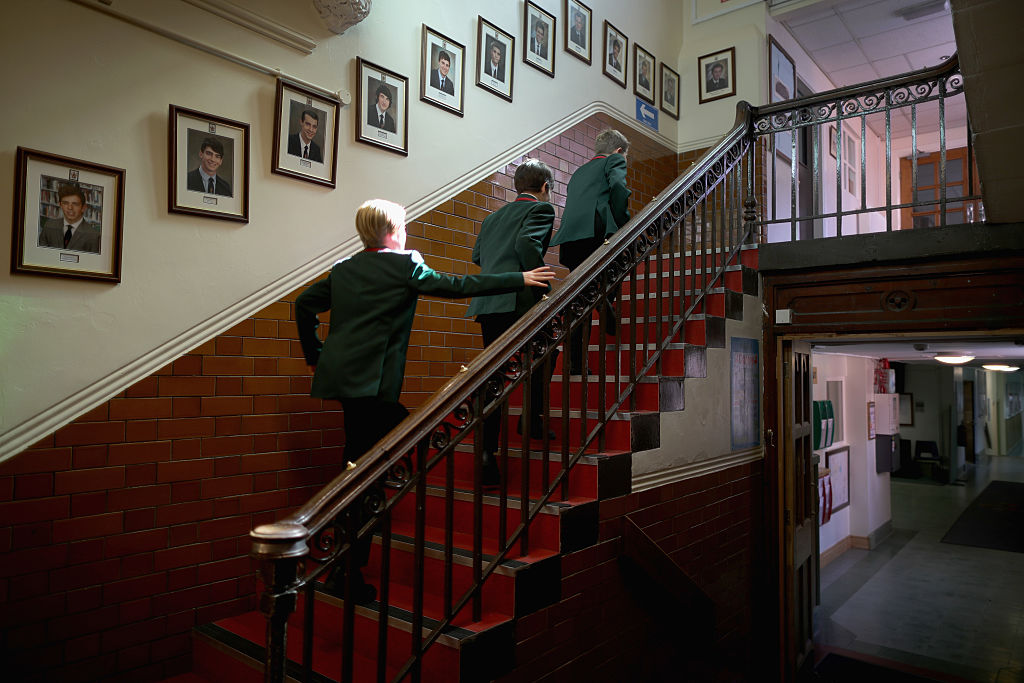Grammar Schools. Now there’s a potent pair of words. Mention them, and genial conversation will instantly shift into awkward silence or seething torrents of passion. In either case, reasoned argument is in short supply. Yet now that Theresa May seems committed to overturning Labour’s ban on opening new grammar schools, discussion is vital. But instead of rehashing the same arguments in favour of academically selective schools, or raking over the same problems they can cause, it’s important instead to look carefully at the evidence about whether grammar schools really do promote ‘social mobility’.
One of the major themes of anti-grammar salvos is that they don’t. And to make this point, the crudest approach is typically taken. This is to focus exclusively on the present state of grammar schools. Do this, and the figures thrown up are indeed problematic. The national average of pupils in state schools (including grammars) eligible for Free School Meals in the last six years (FSM6) – a common if unreliable marker of poverty – is 29 per cent. Although the highest intake by a grammar school is 27 per cent (Handsworth Grammar, Birmingham), grammar schools as a whole average seven per cent. This striking discrepancy reflects the truth that, as things stand, they are primarily bastions of the better-heeled middle classes. But this fact – rather than being read against the recent history of grammar schools – is instead taken to be clear evidence that they do little to transform the lives of those from humbler backgrounds. This is a travesty – and ignores what was the driving purpose of these schools for most of the last millennium.
The haphazard process by which grammar schools have been pared back since 1960 has left enormous imbalances in places where these schools exist. The relatively even geographical spread of the 1,300 grammars in the early 1960s declined rapidly in that era of social and cultural transformation: in fifteen years, the figure plummeted to below 200. Now 163 survive – yet their perverse distribution would baffle any casual observer. Most counties – including many of the most populated – have none to their name. But look elsewhere: there are six on the Wirral, eight in Birmingham, and fifteen in Lincolnshire. Central London largely lacks them, but its commuter districts do well: Essex has eight, Bucks thirteen. Most strikingly, 37 – nearly a quarter of the total – are in Kent. Yet in many of the most deprived areas of the country there are no grammar schools at all. There is not a single grammar in the North East, nor in most industrial towns of the North. Remarkably, there’s only one grammar school north of Ripon – in Penrith, Cumbria.
These are not idle geographical observations. Take the 50 most deprived of England’s 152 upper-tier local authorities, and we find that 45 of them have no grammar schools at all. In fact, fewer than 10 per cent of grammar schools exist in this most deprived third of our local authorities. As to those authorities with the most pupils eligible for Free School Meals, none in the top ten have a single grammar school. It’s clear that grammar schools are rare in the most deprived areas of the country. But this should not be seen as a natural consequence of grammar schools’ existence. Instead, it’s a relatively recent development. In 1959, when 40 per cent of 15-year-old pupils were in grammar schools, and 60 per cent of 17-year-old pupils, every selective school had a wide range of intake. Indeed, it’s striking, however crude the metric, that back then almost half of grammar school pupils were the children of manual workers – and in Yorkshire 60 per cent were. The Crowther Report of the same year observed that ‘the grammar school… is socially a pretty fair cross-section of the population. It is highly important that it should remain so’.
Times have changed. With grammar schools existing in only certain parts of the country, the availability of educational excellence without financial cost has lured parents into their catchment areas. This almost exclusively means that those families with enough money and freedom to move house can shimmy up close to the most desirable schools. House prices in these areas have risen sharply as a result; and this influx of money because of schools – not jobs – has distorted the demographic of surrounding communities.
Perhaps the wheels are now turning. A report released this week by the Centre for Policy Studies has reached similar conclusions. The report highlights the unwelcome influence of house prices on the current profile of secondary education. As well as supporting the prospect of more free schools, it defends the effectiveness of grammars across the full range of society by observing that the ‘attainment gap between rich and poor at grammar schools is just 4.3 per cent, but over 25 per cent at all schools’. The report is well worth reading, not least as a refresher about the current state of play. I was struck in particular by a table that shows that in three London local authorities that have grammar schools, all secondary pupils in that area attend a school rated good or outstanding. In the twenty-first century, it’s not clear that grammar schools would – as that well-worn complaint runs – leave the rest behind.
As it is, the establishment of middle-class enclaves around grammar schools is unquestionably a bad thing, obscuring their commitment to teaching those most able academically, irrespective of background. Academically selective schools can only reach this goal if they are geographically available to all. For the time being, however, the distorted distribution of our country’s schools is clearly unfair. So, what would be fair? Well, there are two ways to even out the playing field across the country. Either to allow areas to open new selective schools (grammars or free schools), should local parents and authorities desire them, or to ban such schools in their entirety. Whatever your view on academic selection (between or within schools), it’s surely a good thing that the current middle-ground compromise is now open to change.
Other things will need to be done. The 11-plus – hammered out on the anvil of post-war pragmatism by Rab Butler in 1944 – must be properly tutor-proofed. To downplay socio-economic influences it should also be broadened in its range. Schools should engage more closely with local primaries about the process and format of selection to ensure that all are in a position to apply. There should also be scope to move in – and out – of these schools as pupils’ circumstances change. Several grammars already operate a quorum of Free School Meal places. Theresa May has gone further, arguing that allowance should be made in 11-plus marks for those from disadvantaged backgrounds. Existing grammars have taken notice: three-quarters will now prioritise pupils from disadvantaged backgrounds, and more than a third will actively increase their numbers within the school.
All of these matters are riven with controversy, bias and anecdote – but these fundamental arguments about education need to be had. If they are kicked into the long grass, we must stand and stare at the iniquities of the present system. Spare a thought for Knowsley in Merseyside. In the whole of this local authority there is not one school, of any kind, that offers sixth-form education. All those with the ambition to study beyond the age of sixteen have to travel outside the region to reassume their right to encounter A-Levels.
‘Social mobility’ is fast-tracked by an excellent education. Whatever this process looks like, it must be one equally available to any community. Wherever you stand on these eggshells, then, the Prime Minister’s proposed removal of the ban on founding new selective schools will at least put paid to the present-day postcode lottery.
David Butterfield is a Fellow in Classics at Queens’ College, Cambridge






Comments